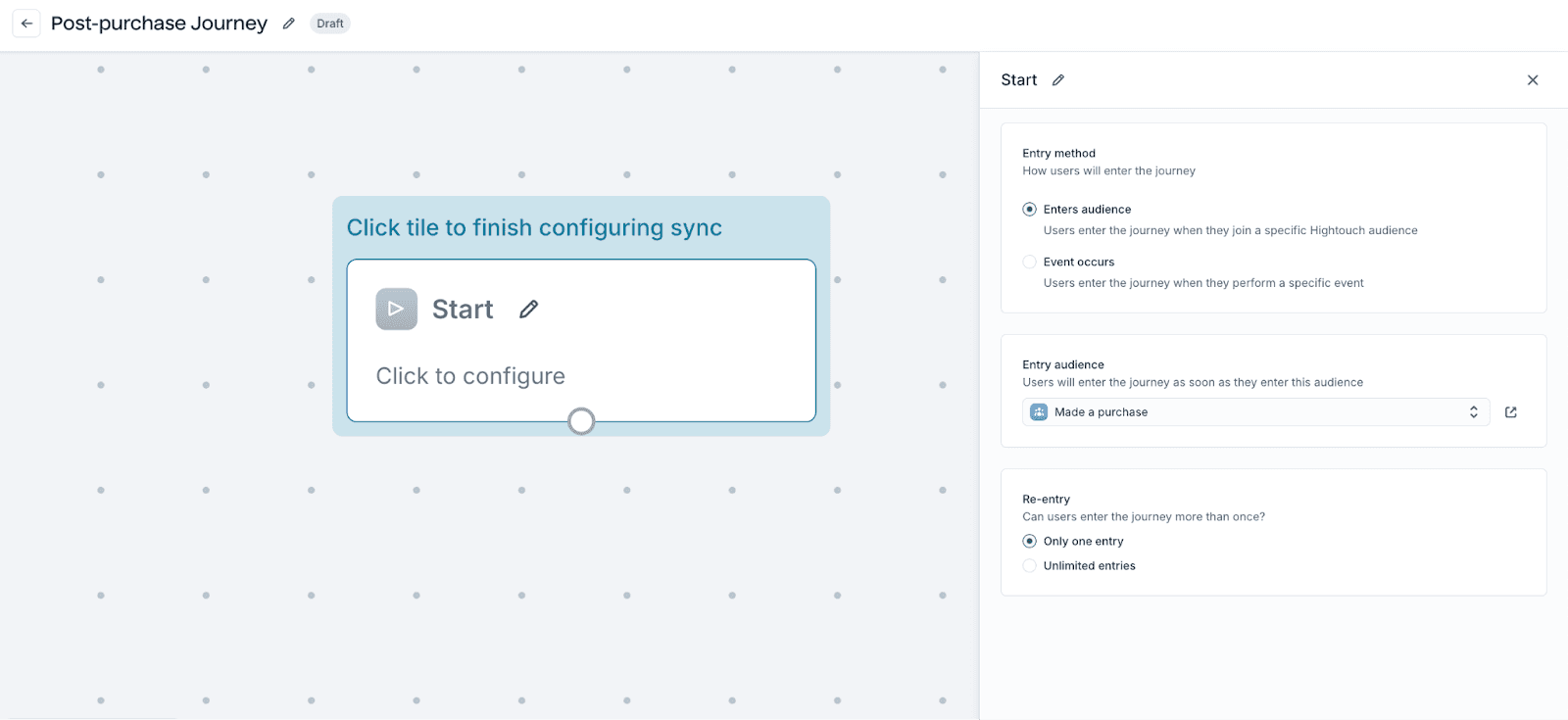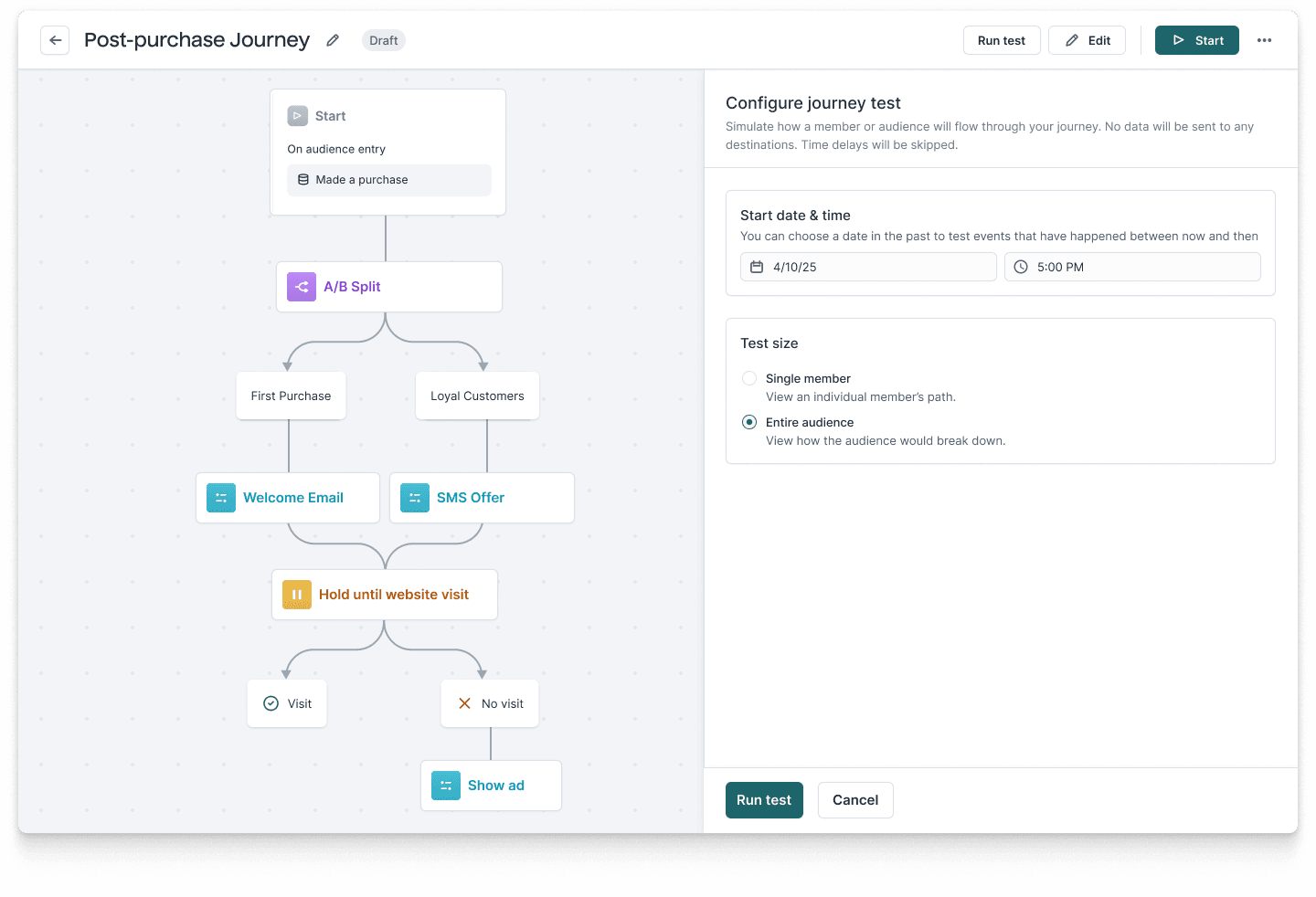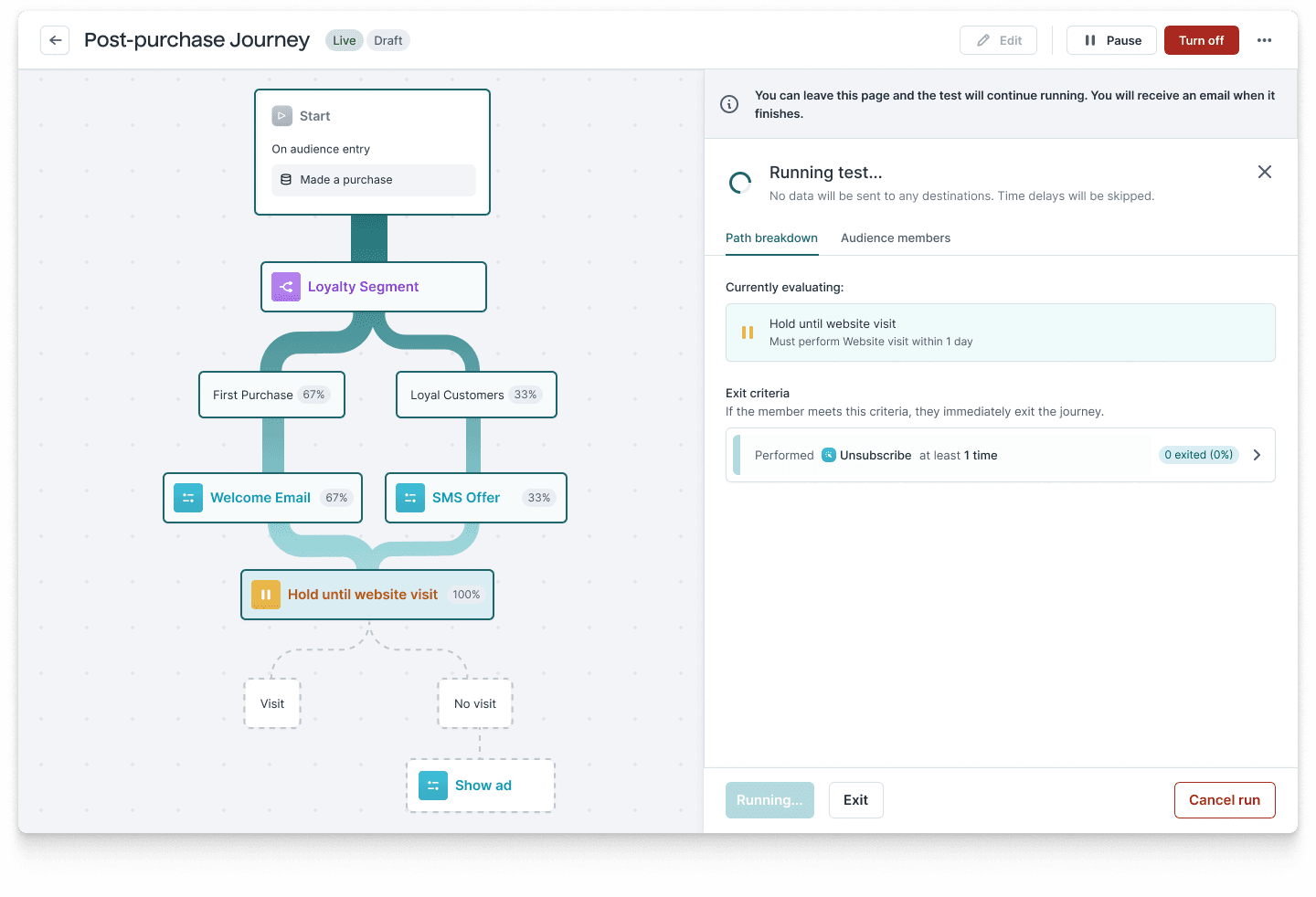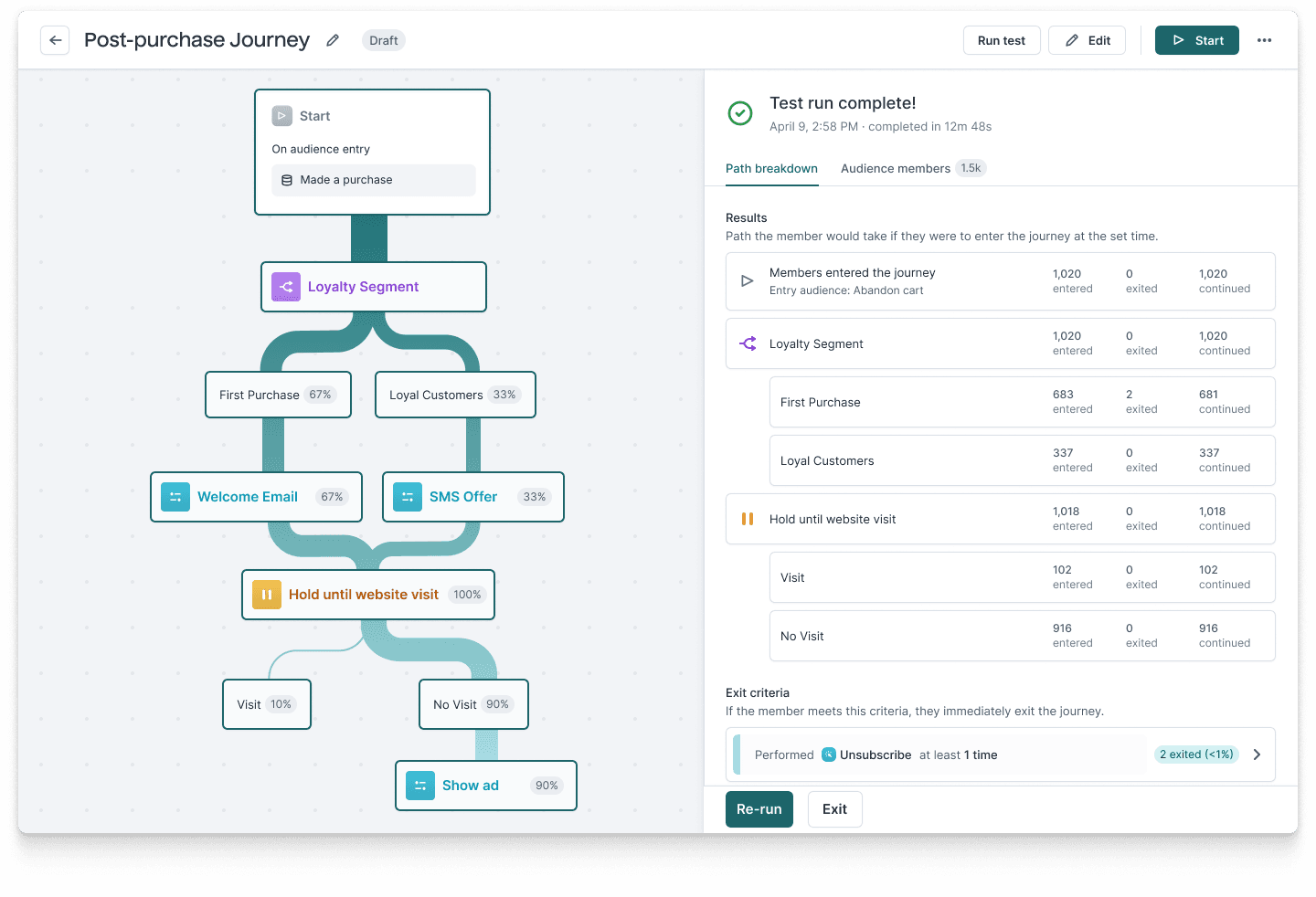Imagine buying a car without test-driving it. You spend days, maybe even weeks, researching the perfect model, only to drive home and realize that it isn’t quite right.
Very few people would commit to purchasing a car without a test drive, no matter how much research they do. The same logic applies to building customer journeys. You could do significant customer research or create large amounts of sample data to perform quality checks, but nothing compares to a complete test drive with your whole audience if you want to fully understand a journey’s impact (and where it can be improved).
We built Journey Simulations to give marketers strategic insight into journeys before they are live using real, historical customer data. Preview expected customer pathways in minutes and launch your journeys with confidence.
Introducing Journey Simulations: A glimpse into the future of your customer experiences
Marketers no longer have to spend days waiting for a journey test to end, scramble to iterate once a flow is live, or worry that they missed the chance to optimize a specific touchpoint. Instead, they can use their historical customer data to anticipate how people will likely progress through each node.
The more detailed and strategic the journey, the more important it is to ensure every touchpoint is right before going live. With a Composable Customer Data Platform (CCDP), marketers can orchestrate powerful, holistic journeys across all their channels with all their data. For example, a journey built in Hightouch might begin when a customer purchases a product on your website and continue over several weeks, spanning channels like email, SMS, and paid advertising (read Adam Greco’s blog for more on when to build journeys in a CCDP).
Without visibility into expected outcomes, marketers often build a simple journey and add more granular tests and splits in later iterations. Journey Simulations eliminate this learning period and let marketers build robust multi-channel journeys right away. Furthermore, marketers no longer need to test on a small subset and wait days or weeks to preview the results. They can confidently design the right journey for their customers, regardless of complexity and channel mix.
How Journey Simulations work
-
To begin, define your customer segments and trigger events that start a customer down this path.

-
Use Hightouch’s Journey Builder to create your omnichannel journey and select “Run Test”.

-
Configure your test. Select your data window and determine your audience size.
- Running your test on a single member is best for quality testing.
- Running your test on the entire audience gives strategic insight into the customer experience. The simulation relies on historical data, giving you insight into potential outcomes. For example, suppose all members in the simulation progress down the 'rule not met' path in a tile that checks for website visits in the 5 days after initial purchase. You can use that information to iterate on your journey strategy to drive more visits.

-
Based on the characteristics of your audience, the simulation will determine how people are expected to progress through the journey.

-
Analyze the simulation. You can simulate a journey as many times as necessary before launch.

Building for the future: How AI Decisioning agents power journeys
With Hightouch Journey Simulations, marketers can move beyond guesswork and launch customer experiences with clarity and control. This same level of visibility is essential in the era of agentic AI, where AI agents will make more marketing decisions autonomously. We’re already seeing early users of our AI Decisioning platform replace some journeys with autonomous AI agents that determine the best experience for each person (we wrote a blog about when to use journeys vs. AI Decisioning here).
With the ability to predict and preview journey flows, marketers have unmatched control over their data and desired outcomes. To get started, reach out to one of our solutions engineers today.















